Australia So Much to See


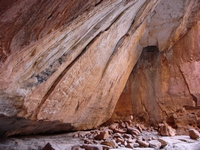
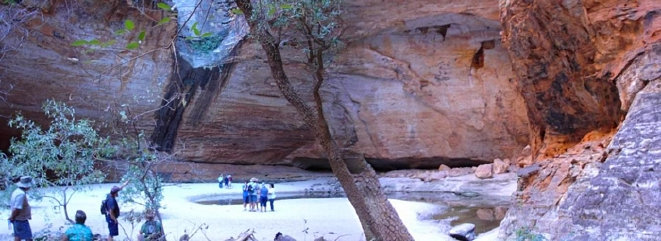

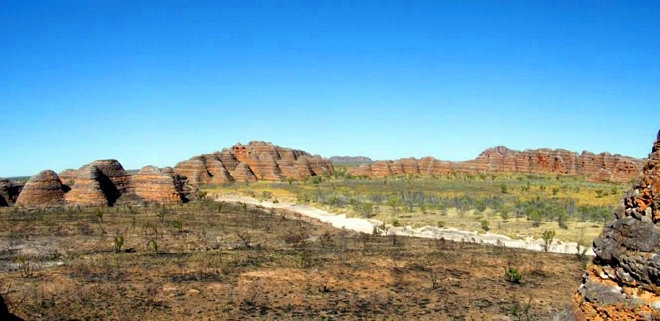

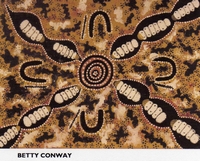
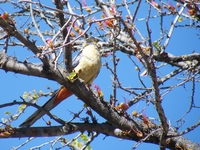
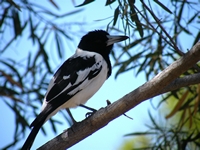
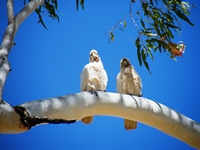
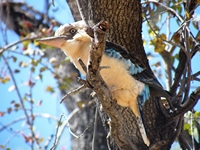
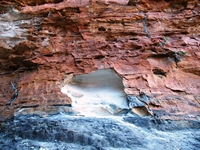
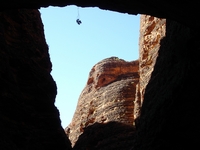
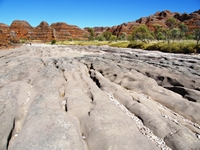
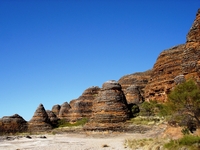
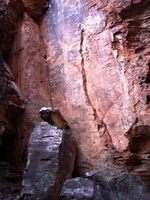
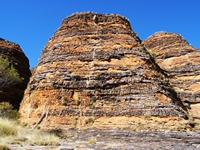
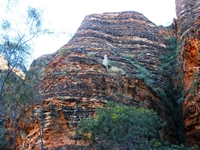
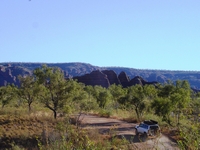
Purnululu – the spectacular Bungle Bungle Range 2008 Purnululu National
Park
A Blue-winged Kookaburra watched us without any fear.
With a group of Corellas in a nearby tree, we knew we would be woken in the morning at first light.
Cheeky Pied Butcher Birds whistled and serenaded us.
Near the entrance to the cavern is evidence of a rock slide. Looking up, there was a sheer surface, where huge slabs of rocks
had slid down. Colouration on the rock surface shows it was not a recent occurrence.
A termite mound looks like a large grey bird
We had completed all the short walks currently opened, although further walk trails are being planned for the future.
Even the rocks forming the sides of the cavern had shape of cathedral buttresses.
Looking back through the opening at the entrance to the “Cathedral”.
Everyone in the camp was up and out into the cold morning air as the Corellas started their ‘time to get up’ calls at 5.30 am. We set out to see the features of the southern portion of Purnululu. Here the hills are the well known striped dome shapes,
with their distinctive bands of colour. Even in the shadows of early morning, the continuity of the stripes linking the domes
can be clearly seen.
The Domes walk is any easy loop through typical dome shaped formations.
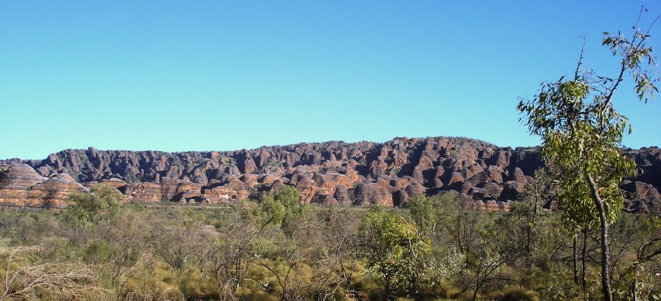
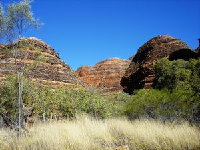
Continuing on from the Domes is the walk to the spectacular Cathedral Gorge. It is cave like, with a sloping ceiling and small
opening overhead. As we approached, someone was singing, and his voice echoed down the valley as we entered. It was a
magical moment. A crowd had gathered, enchanted by the entertainment offered that morning. The acoustics of the rock chamber
rivalled that of a good opera theatre. There was a small pool remaining on the white sandy floor. The black stains in
the background are from a seasonal waterfall.
Piccaninny Creek runs for some distance through Purnululu, exiting to the south where it joins the
The grey creek bed is heavily eroded. We did not take the long walk through Piccaninny Gorge. This can be undertaken as
far as the walker chooses, in anything between two and seven days.
Conical shapes along the Piccaninny creek line.
Sunlight brought out the colours on the domes as we left the southern walks.
We returned to the highway and headed north, with the scenery in the afternoon looking different to the morning light on our drive
south two days previous.
Established
in 1988 and originally housed at the old Turkey Creek Post Office, a new studio and galley was opened in 2007. Each canvas
is painted using traditional ochre and natural pigments collected in the
The Warmun Art Centre provides artists with economic independence and the opportunity to share their Gija culture and country with
visitors. Exhibitions have been held throughout
Dots predominate in most of the paintings, and many include dome shaped representations of Purnululu. Taking traditional styles of ceremonial painting onto canvas and creating an art industry has become widespread across northern
I chose this Bardee Grub painting by artist Betty Conway, who now resides and paints in the